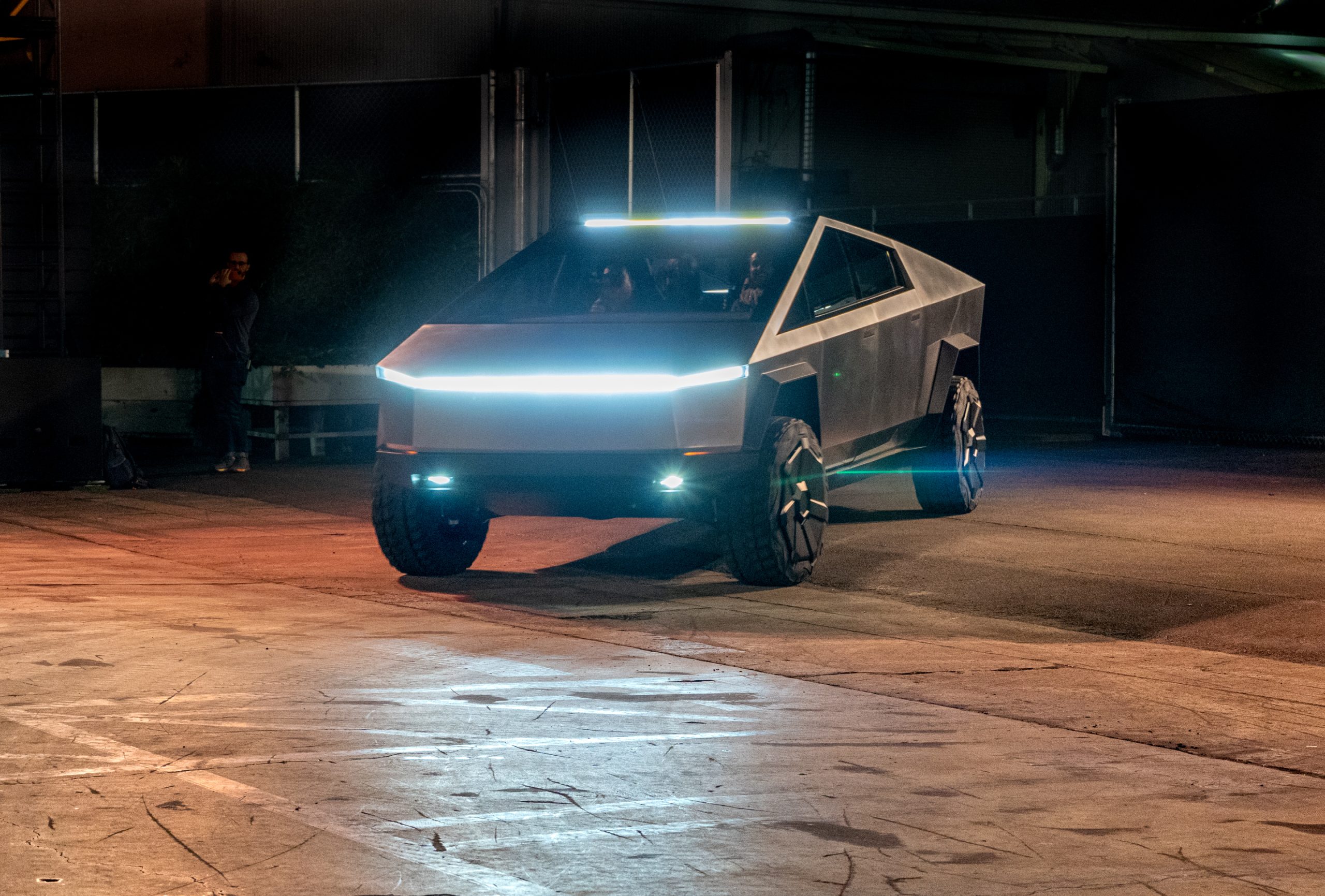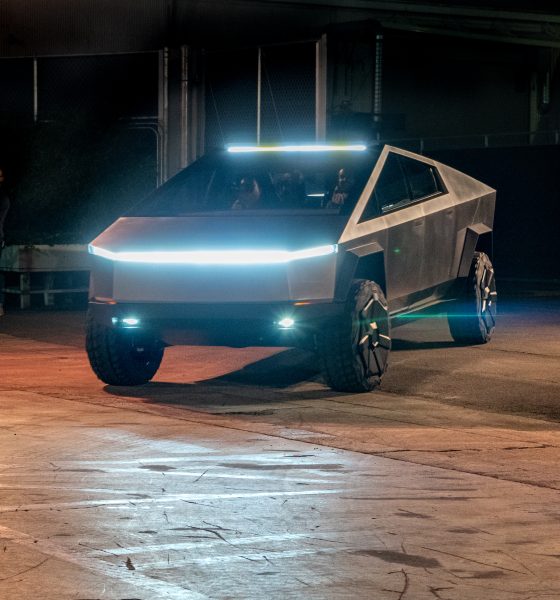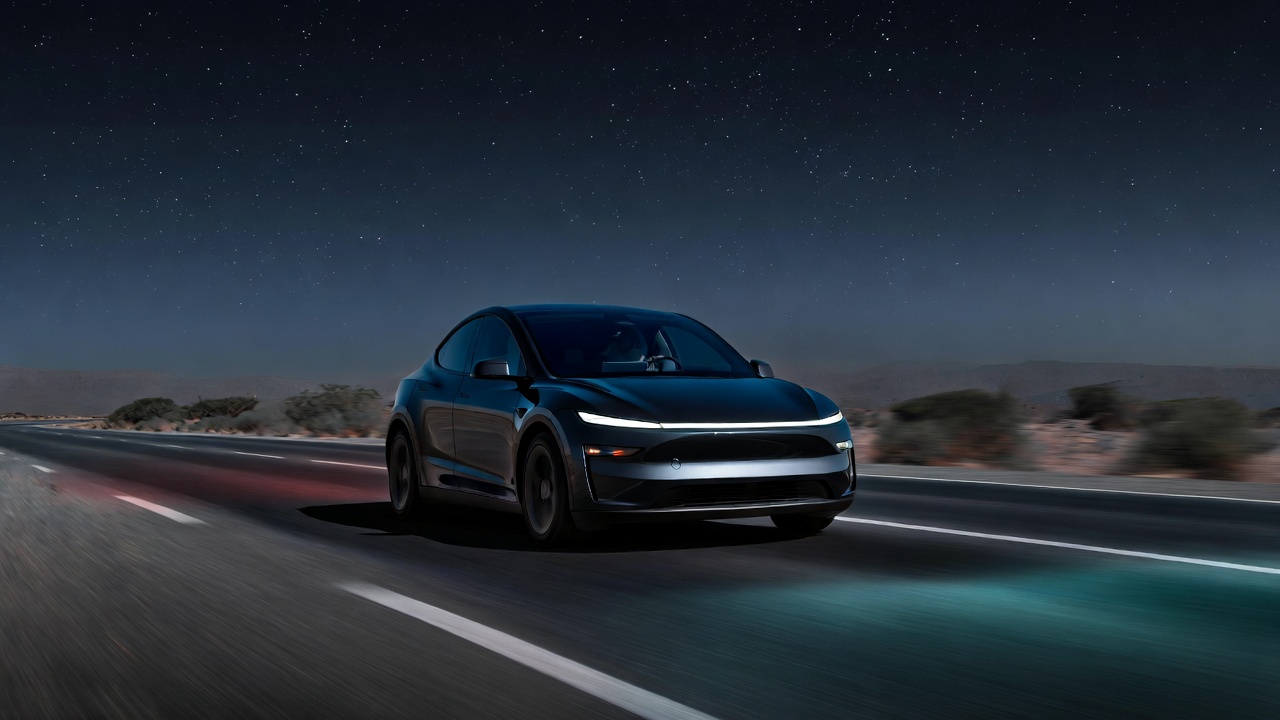

News
Tesla Cybertruck’s ‘simple’ design goes way deeper than you think
Elon Musk’s Cybertruck is Tesla’s boldest vehicle yet. With its sharp edges and its unapologetically futuristic look, the Cybertruck appears to be a vehicle that is designed to shock and polarize. Yet, behind its almost brutalist exterior lies a clever theme that gives the Cybertruck the potential to be Tesla’s most disruptive vehicle to date, mainly due to its production efficiencies that are tied to its very exoskeleton.
When Tesla unveiled the Cybertruck on Thursday night, a good number of netizens and those who were in attendance at the event were shocked. The massive vehicle was clad in cold, hard, unpainted stainless steel, and its sharp triangular design makes it look extremely different from every other pickup truck on the market. Elon Musk has been saying that the Cybertruck will be polarizing, and it definitely was.
Unlike Tesla’s other vehicles like the Model S, X, and Model 3, the Cybertruck uses an exoskeleton that is made from a new variant of 3000 series stainless steel that’s cold-worked several times. The material is tough and is not unlike the steel used in SpaceX’s gigantic Starship. With this system in place, Tesla is able to skip the traditional stamping process for the vehicle’s body panels. Instead, the Cybertruck’s frame will be laser cut and folded, much like an origami that’s made of steel.
And just like actual Japanese origami, the Cybertruck’s stainless steel body is actually folded into shape instead of being cut up into several pieces and stamped multiple times by massive machines, according to an exclusive look into the vehicle by MotorTrend. Considering that the stamping process is very capital intensive (stamping machines are among the largest and most expensive components of a car factory), Tesla’s origami-style design for the Cybertruck becomes a very cost-effective way to produce a massive, durable, futuristic vehicle at relatively low cost.
Elon Musk recently elaborated on this in a recent tweet, stating that the Cybertruck’s 3mm-thick stainless steel exoskeleton is not very friendly to stamping machines. “Reason Cybertruck is so planar is that you can’t stamp ultra-hard 30X steel, because it breaks the stamping press,” Musk wrote.
Using stainless steel also allows Tesla to skip out on the painting of the vehicle, allowing the company to not use a paint shop in the vehicle’s production process. This results in further savings, while also avoiding the paint headaches that Tesla had to deal with when it ramped its previous vehicles, particularly the Model 3.
The absence of the stamping press and the paint shop in the Cybertruck’s production has another advantage, in the way that the vehicle’s production line could probably be done in a relatively small area. Without giant stamping presses and an expansive paint shop, after all, Tesla could produce the Cybertruck in an assembly line that is designed for speed.
The EV community was shocked by the starting price of the Cybertruck just as much as it was shocked by the vehicle’s design. Starting at $39,990, the base Cybertruck is very competitively priced and is chock full of tech that its competitors simply cannot hold a candle to. Couple this with a design that is optimized for efficiency, and the vehicle could very well be a disruptor on its own right in the highly-competitive pickup truck segment.

News
Tesla is not sparing any expense in ensuring the Cybercab is safe
Images shared by the longtime watcher showed 16 Cybercab prototypes parked near Giga Texas’ dedicated crash test facility.

The Tesla Cybercab could very well be the safest taxi on the road when it is released and deployed for public use. This was, at least, hinted at by the intensive safety tests that Tesla seems to be putting the autonomous two-seater through at its Giga Texas crash test facility.
Intensive crash tests
As per recent images from longtime Giga Texas watcher and drone operator Joe Tegtmeyer, Tesla seems to be very busy crash testing Cybercab units. Images shared by the longtime watcher showed 16 Cybercab prototypes parked near Giga Texas’ dedicated crash test facility just before the holidays.
Tegtmeyer’s aerial photos showed the prototypes clustered outside the factory’s testing building. Some uncovered Cybercabs showed notable damage and one even had its airbags engaged. With Cybercab production expected to start in about 130 days, it appears that Tesla is very busy ensuring that its autonomous two-seater ends up becoming the safest taxi on public roads.
Prioritizing safety
With no human driver controls, the Cybercab demands exceptional active and passive safety systems to protect occupants in any scenario. Considering Tesla’s reputation, it is then understandable that the company seems to be sparing no expense in ensuring that the Cybercab is as safe as possible.
Tesla’s focus on safety was recently highlighted when the Cybertruck achieved a Top Safety Pick+ rating from the Insurance Institute for Highway Safety (IIHS). This was a notable victory for the Cybertruck as critics have long claimed that the vehicle will be one of, if not the, most unsafe truck on the road due to its appearance. The vehicle’s Top Safety Pick+ rating, if any, simply proved that Tesla never neglects to make its cars as safe as possible, and that definitely includes the Cybercab.
Elon Musk
Tesla’s Elon Musk gives timeframe for FSD’s release in UAE
Provided that Musk’s timeframe proves accurate, FSD would be able to start saturating the Middle East, starting with the UAE, next year.

Tesla CEO Elon Musk stated on Monday that Full Self-Driving (Supervised) could launch in the United Arab Emirates (UAE) as soon as January 2026.
Provided that Musk’s timeframe proves accurate, FSD would be able to start saturating the Middle East, starting with the UAE, next year.
Musk’s estimate
In a post on X, UAE-based political analyst Ahmed Sharif Al Amiri asked Musk when FSD would arrive in the country, quoting an earlier post where the CEO encouraged users to try out FSD for themselves. Musk responded directly to the analyst’s inquiry.
“Hopefully, next month,” Musk wrote. The exchange attracted a lot of attention, with numerous X users sharing their excitement at the idea of FSD being brought to a new country. FSD (Supervised), after all, would likely allow hands-off highway driving, urban navigation, and parking under driver oversight in traffic-heavy cities such as Dubai and Abu Dhabi.
Musk’s comments about FSD’s arrival in the UAE were posted following his visit to the Middle Eastern country. Over the weekend, images were shared online of Musk meeting with UAE Defense Minister, Deputy Prime Minister, and Dubai Crown Prince HH Sheikh Hamdan bin Mohammed. Musk also posted a supportive message about the country, posting “UAE rocks!” on X.
FSD recognition
FSD has been getting quite a lot of support from foreign media outlets. FSD (Supervised) earned high marks from Germany’s largest car magazine, Auto Bild, during a test in Berlin’s challenging urban environment. The demonstration highlighted the system’s ability to handle dense traffic, construction sites, pedestrian crossings, and narrow streets with smooth, confident decision-making.
Journalist Robin Hornig was particularly struck by FSD’s superior perception and tireless attention, stating: “Tesla FSD Supervised sees more than I do. It doesn’t get distracted and never gets tired. I like to think I’m a good driver, but I can’t match this system’s all-around vision. It’s at its best when both work together: my experience and the Tesla’s constant attention.” Only one intervention was needed when the system misread a route, showcasing its maturity while relying on vision-only sensors and over-the-air learning.
News
Tesla quietly flexes FSD’s reliability amid Waymo blackout in San Francisco
“Tesla Robotaxis were unaffected by the SF power outage,” Musk wrote in his post.

Tesla highlighted its Full Self-Driving (Supervised) system’s robustness this week by sharing dashcam footage of a vehicle in FSD navigating pitch-black San Francisco streets during the city’s widespread power outage.
While Waymo’s robotaxis stalled and caused traffic jams, Tesla’s vision-only approach kept operating seamlessly without remote intervention. Elon Musk amplified the clip, highlighting the contrast between the two systems.
Tesla FSD handles total darkness
The @Tesla_AI account posted a video from a Model Y operating on FSD during San Francisco’s blackout. As could be seen in the video, streetlights, traffic signals, and surrounding illumination were completely out, but the vehicle drove confidently and cautiously, just like a proficient human driver.
Musk reposted the clip, adding context to reports of Waymo vehicles struggling in the same conditions. “Tesla Robotaxis were unaffected by the SF power outage,” Musk wrote in his post.
Musk and the Tesla AI team’s posts highlight the idea that FSD operates a lot like any experienced human driver. Since the system does not rely on a variety of sensors and a complicated symphony of factors, vehicles could technically navigate challenging circumstances as they emerge. This definitely seemed to be the case in San Francisco.
Waymo’s blackout struggles
Waymo faced scrutiny after multiple self-driving Jaguar I-PACE taxis stopped functioning during the blackout, blocking lanes, causing traffic jams, and requiring manual retrieval. Videos shared during the power outage showed fleets of Waymo vehicles just stopping in the middle of the road, seemingly confused about what to do when the lights go out.
In a comment, Waymo stated that its vehicles treat nonfunctional signals as four-way stops, but “the sheer scale of the outage led to instances where vehicles remained stationary longer than usual to confirm the state of the affected intersections. This contributed to traffic friction during the height of the congestion.”
A company spokesperson also shared some thoughts about the incidents. “Yesterday’s power outage was a widespread event that caused gridlock across San Francisco, with non-functioning traffic signals and transit disruptions. While the failure of the utility infrastructure was significant, we are committed to ensuring our technology adjusts to traffic flow during such events,” the Waymo spokesperson stated, adding that it is “focused on rapidly integrating the lessons learned from this event, and are committed to earning and maintaining the trust of the communities we serve every day.”








